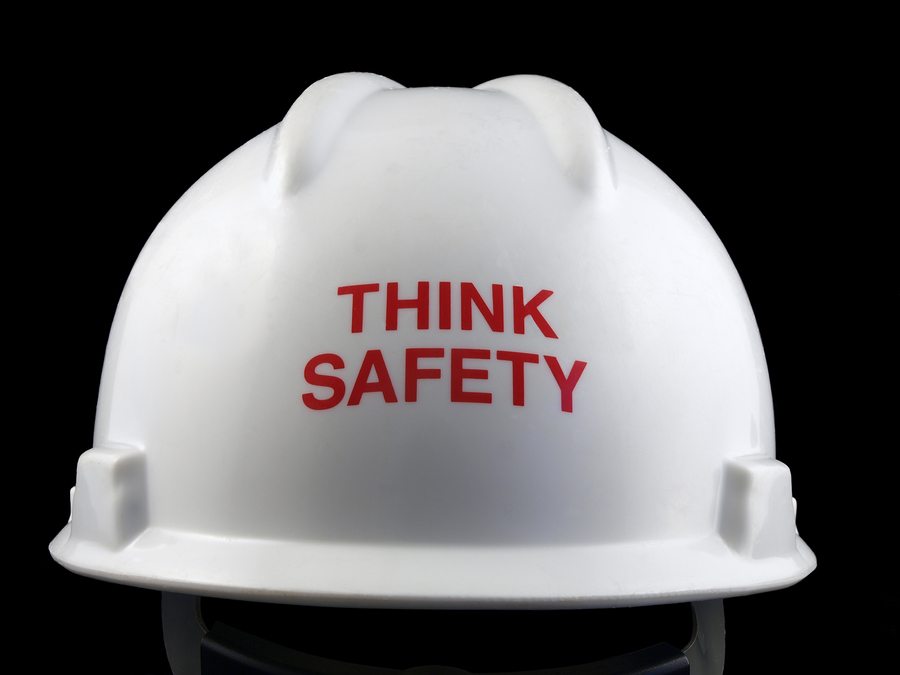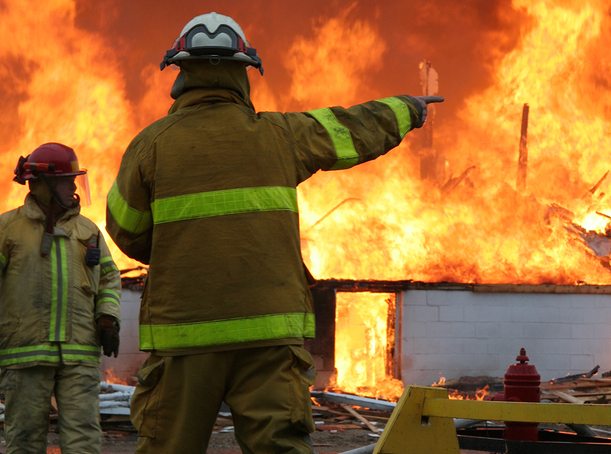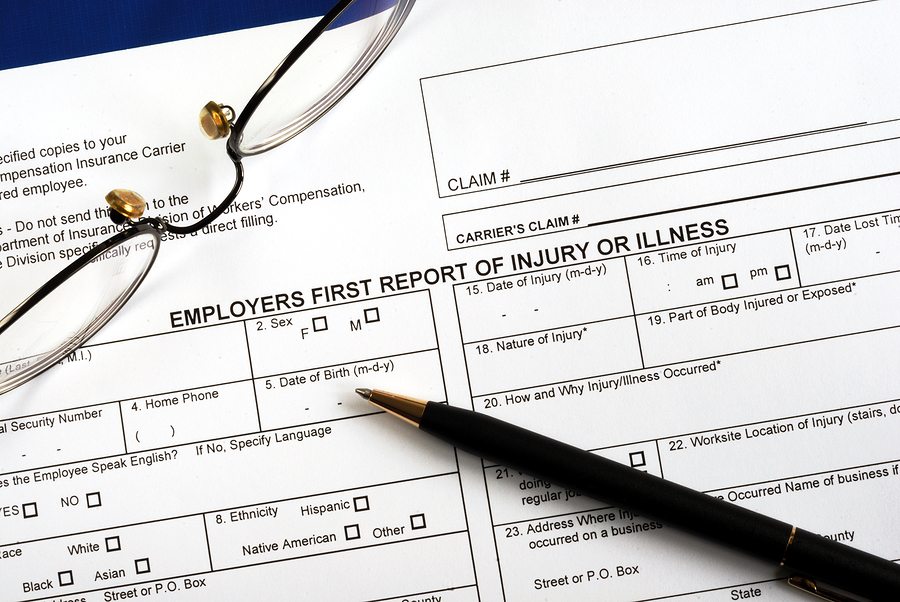by jeffp | Sep 24, 2015 | Workplace Safety

If your workers are frequently ill or they complain about symptoms such as headaches, itchy eyes, scratchy throats, stuffy and sneezy noses, coughs or nausea that clear up once they leave the office, then poor indoor air quality—or IAQ—may be to blame. According to the Environmental Protection Agency, poor indoor air quality costs U.S. businesses tens of billions of dollars every year in lost productivity and added healthcare expenses.
What Constitutes an Indoor Air Hazard?
The air quality in your workplace is affected by a very large number of factors. The building itself—from its architectural design to its physical location—can play a part. Renovations produce excessive dust, while leaks allow the penetration of exterior moisture, leading to dampness and mold growth. Overcrowded offices and improperly operated and maintained HVAC systems can also cause a reduction in indoor air quality—as can the presence of contaminants founds in cleaning supplies, formaldehyde from carpeting, and ozone from copy machines.
Indoor air hazards typically fall into three categories. Biological pollutants include the mold mentioned earlier as well as animal dander, bacteria, viruses, fungi and pollen. Chemical pollutants include gases from products used within the building as well as chemical fumes that are drawn into the workplace from outside. Particle pollutants included dust—one of the biggest culprits in most offices—as well as dirt and other solid or liquid substances.
What Steps Can You Take to Eliminate Indoor Air Hazards?
Fortunately, poor IAQ is a solvable problem for most workplaces. Assessing the situation is the first step you must take. This may include surveying your employees on their symptoms as well as reviewing your workplace illness and injury records. The information you gather should help you ascertain the size of the issue. From there, consider the following actions to improve the indoor air quality in your workplace.
- Identify pollutant sources – Take a look at the products used within your workplace, from cleaning supplies to printer ink and bathroom tissue. If you find any that contain contaminants known to cause the symptoms your employees are experiencing, replace those products with healthier alternatives. Professional air monitoring tests may be helpful in the identification of potential contaminants.
- Keep your workplace clean – Dust surfaces—including walls—regularly and vacuum floors as frequently as possible. Avoided piles of clutter and office supplies as these only serve to collect more dust. If you cannot afford professional custodial services, require your employees to tidy their area daily.
- Evaluate air circulation – “Stale air” contains higher levels of carbon dioxide and carbon monoxide. It may be created when indoor air is excessively re-circulated or when the office ventilation is not sufficient to account for the number of workers within a given space. Opening windows may help, as will adjustments to your building’s ventilation system. The American Society of Heating, Refrigerating, and Air Conditioning Engineers—or ASHRAE—recommends a ventilation system provide your office with 20 cubic feet of fresh outside air per minute per person.
- Control for temperature and humidity – To optimize indoor air quality, experts recommend keeping the interior temperature of your workplace between 68 and 75 degrees Fahrenheit as well as maintaining humidity between 30 and 60 percent. This adjustment alone can dramatically reduce the incidence of upper respiratory symptoms in the workplace.
- Maintain your HVAC system – A properly functioning heating, ventilation and air conditioning system is essential to the elimination of dangerous indoor air hazards. At minimum, you should schedule professional servicing of your HVAC system at least once a year. Even better, invest in maintenance every spring and fall. File copies of maintenance records so they may be analyzed in the event that poor indoor air quality problems pop up again.
by jeffp | Sep 9, 2015 | Workplace Safety

Most employers are aware of their legal requirement to provide a safe working environment where staff can perform duties—from reception to construction, research to hospitality—free from recognized health and safety hazards. However, some forget that the Occupational Safety and Health Act also prohibits employers from discriminating against their workers for reporting potentially dangerous situations, illnesses or injuries incurred on the job.
In 2014 the U.S. Department of Labor filed a lawsuit against The Ohio Bell Telephone Company—operating under the name AT&T—after the company suspended 13 workers without pay for reporting workplace injuries. While AT&T’s actions blatantly violated the whistleblower provisions of the OSH Act of 1970, discriminatory workplace injury policies are often much more subtle—so much so in fact that you may not even be aware that the Occupational Safety and Health Administration would deem your company’s practice unlawful.
Consider these very common yet potentially discriminatory policies that could discourage employee reporting of illnesses and injuries. If you recognize any from your own company practices, you may want to contact a workplace safety consultant or OSHA’s Office of Whistleblower Protection Programs for guidance on appropriate changes.
Disciplinary Action as a Result of Injury – If a workplace injury policy requires an employer to take disciplinary action against an employee who is injured on the job—regardless of the circumstances surrounding the injury—OSHA may consider it discriminatory. Such a policy aggressively discourages workers from reporting injuries or illnesses (always a protected action under the OSH Act) and is in conflict with the employer’s obligation to establish a method for such reporting.
Disciplinary Action for Violating Reporting Procedure – As an employer, you want your workers to follow established procedures for reporting illnesses and injuries. However, if you take disciplinary action against an employee who reports an injury because he or she did not follow the proper procedure when making the report, OSHA may consider your policy discriminatory—especially if your procedural rules are unreasonable, make compliance difficult, or are accompanied by unjustifiably harsh sanctions.
Disciplinary Action Post-Injury for Violation of Safety Rule – Establishing and communicating the consequences of violating workplace safety rules are important steps in the construction and management of any workplace safety program. However, if your company has a policy to discipline injured workers for their violation of safety rules, OSHA may find it discriminatory—especially if you have never imposed equivalent discipline against uninjured employees for rule violation.
Incentivizing Employees to Avoid Reporting Injuries – If you award bonuses to employees or enter them in drawings for prizes if they are accident-free, you may be unintentionally encouraging your workers to refrain from reporting injuries and illnesses sustained on the job. OSHA suggests you avoid this potentially discriminatory workplace policy by incentivizing your employees’ consistent participation in safety-related activities—such as workshops and safety training—rather than compensating them for an absence of injury.
by jeffp | Aug 25, 2015 | Workplace Safety

Telling the truth when it can cost a company some of its profit has never been a popular choice. Yet that is the position that safety officers find themselves in if they wish to do their job. While they will not typically contact the local media for an expose, they are expected to let higher-ups know when the company is in violation of OSHA regulations – even when fixing the problem can cost thousands of dollars.
Most people would not covet such a job. And whether or not your company has a safe work environment is highly dependent not only on the safety officer doing his job, but the ability of supervisors to listen to his input, even when it goes against a company’s financial efforts or traditional manner of conducting business.
The April 2013 ASSE journal, “Professional Safety,” has published an article that lends validity to this uncomfortable truth. In “The Dissenting Voice – Key Factors, Professional Risks and Value Add,” author Dave Rebbitt, CRSP, CHSC explains the link between an organization’s structure and its commitment to worker safety.
Top-down authoritarian structures do not tend to tolerate the type of dissent that needs to occur for organizational change to happen. This is particularly applicable in the area of safety. When an organization rewards compliance and conformity, it will be difficult for safety officers and other employees to speak up about unsafe conditions and advocate for change.
Organizations with dual-authority matrix structures or other less hierarchal power structures, however, tend to tolerate greater dissent or even embrace it. In such companies, employees often feel a greater sense of empowerment and are better able to bring safety issues to the attention of management without fear of retaliation. According to the article, this type of organization tends to have better safety records.
Professional safety officers should consider the structure of the organization before taking on a new position, keeping in mind that they are likely to be far more effective working for a company that finds value in dissent.
Those in positions of power should consider if the organizational structure is putting their workers at risk — and act to remedy the situation.
by jeffp | Aug 11, 2015 | Workplace Safety

Don’t wait until you actually have a fire on-site to start your fight against fire. Use the following tips help keep construction sites free from the threat of fire:
- No smoking – have and enforce a no smoking policy on the construction site.
- Loss control plan – the written loss control plan should comprehensively address the risks of fire exposure and include specific objectives to be enforced by management on the job site, general safety measures, and a named person to be in charge of on-site safety coordination.
- Inspections and logs – project managers should do daily on-site inspections of all materials and equipment, the work area, and any other nearby location with potential hazards. A running log should be kept of these daily inspections.
- Hot works – cutting, brazing, welding, and other hot works operations should have a person designated to observe the working area, as well as areas adjacent to it. The person should maintain a line of sight and watch combustible products, sparks, and slag. The surrounding areas should be inspected for a minimum of 30 minutes after the hot works operation ceases.
- Portable heating equipment – place all portable heating equipment on non-combustive platforms or flooring. Use recognized standards and/or the manufacturer’s specifications for ensuring the appropriate maintenance, fueling, and clearance.
- Enclosures – construct temporary enclosures with designated paths for transporting materials. For the best results, only construct the temporary enclosure with non-combustible approved materials and locate it away from overhead exposures.
- Flammable materials – the labeling and identification requirements of gas and flammable liquid containers should be reviewed carefully before they’re brought on the construction site. Make sure that safe storage areas for flammables have been clearly designated and that the area includes surrounding barriers and signs.
- Firefighting equipment – keep firefighting equipment on-site and easily available at all times. The project manager should ensure that there is always a reliable water supply available for the equipment to connect to and that the equipment will adapt to local fire department equipment if necessary.
- Rooftops – roof vents should be adequately cleaned to decrease sources of ignition like lint. Additionally, a minimum of one portable fire extinguisher should be located at-level during rooftop operations. Make sure the extinguisher has sufficient capacity for the fire risk.
by jeffp | Jul 30, 2015 | Workplace Safety

When a receptionist trips over a power cord in an office and sprains a wrist, who pays the price? When a construction worker falls off a scaffold and suffers a debilitating back injury, who shoulders the burden? When an ICU nurse develops chronic pain as a result of years of moving patients without proper assistive equipment, who weathers the financial blow? According a recent report from the Occupational Safety and Health Administration (OSHA), the answer may not be what you imagine.
Most of the costs of workplace injuries are borne by the injured workers, their families and the social safety net (funded by taxpayer dollars). Employee’s out of pocket costs average 50 percent, while worker’s compensation generally only covers about 21 percent. Private health insurance (13 percent), federal government (11 percent) and state and local government (5) have to pick up the rest.
With little incentive—other than avoiding negative press and OSHA fines—for maintaining a safe workplace, some employers do little to protect their workers. Despite the Occupational Safety and Health Act—now more than 40 years old—more than three million workers are seriously injured each year. Thousands of others are killed while on the job. And the employees—and their families—may be left to face financial devastation.
“What about worker’s compensation?” you ask.
According to the OSHA report, while workers’ comp insurance was designed to cover lost wages, some medical expense, and the rehab costs associated with work-related injuries, it rarely provides adequate protection. One study cited by OSHA found that injured employees who received workers’ compensation benefits for wage loss caused by workplace accidents in New Mexico lost an average of 15 percent of the wages they would have earned over the decade following their injury. Despite benefits, their incomes were, on average, nearly $31,000 less over those ten years.
Adding insult to injury, other studies cited by OSHA in the report found that only a fraction of injured workers receive any workers’ compensation benefits at all. They estimate fewer than 40 percent of eligible workers actually apply for benefits—perhaps because they do not realize they are entitled or because they are afraid of the hassle. Some file for Social Security Disability Insurance benefits instead.
A tax-payer funded program, the number of Social Security Disability Insurance beneficiaries and the amount of benefits paid has increased dramatically in recent years according to the OSHA report. They postulate that at least part of the growth is attributable to the program’s subsidy for work injuries and illnesses, citing a study that found 36 percent of disabled individuals who had to limit or modify the kind or amount of work they do said they became disabled because of an accident, injury or illness at work.
So what can you do as an employer to reduce the societal costs—paid by your employees and other taxpayers—of unsafe workplaces? The answer is simple: increase your efforts to prevent workplace illnesses and injuries. Not only are you required by law to do so, but providing your employees with a safe workplace spares them the financial hardship and loss of future income associated with job-related accidents.
Whether you need to create a workplace safety program or would like a review of your current policies and procedures, we’re here to help. Give us a call for assistance or answers to any workplace safety questions.
by jeffp | Jul 16, 2015 | Workplace Safety

Water, rest and shade—these are three essential ingredients for keeping outdoor workers safe during the summer months. And now there’s a fourth: the Occupational Safety and Health Administration’s (OSHA) Heat Safety Tool. A new smartphone application created with the assistance of the National Oceanic and Atmospheric Administration (NOAA) and the National Weather Service (NWS), the app was designed to help prevent heat-related illnesses and deaths.
Every year, thousands of workers become ill from heat exposure—and some even die. When hot weather combines with high humidity, body temperatures can rise to dangerous levels. If precautions are not taken—such as plenty of water and breaks to rest in the shade or an air conditioned area—minor heat illness symptoms can quickly progress to heat exhaustion and stroke. Heat stroke is life-threatening and requires immediate medical attention.
While outdoor workers in industries including construction, utilities, agriculture, grounds maintenance, landscaping and oil and gas support operations are often the most affected by heat-related illness, any worker exposed to hot and humid conditions is at risk—especially if they must wear bulking protective clothing or equipment or are performing prolonged strenuous work. New workers, temporary workers and those returning to work after a vacation are at greater risk until they build up a tolerance to the conditions. According to OSHA, most work-related heat deaths occur within the first few days of working in the heat.
The Heat Safety Tool calculates the heat index for the worksite based on temperature and humidity data. The higher the heat index, the hotter the conditions feel. It’s a better indicator than air temperature alone for gauging heat illness dangers, or the “risk level” displayed by the app. Risk levels are:
- Heat index less than 91°F = low
- Heat index 91°F to 103°F = moderate
- Heat index 103°F to 115°F = high
- Heat index above 115°F = extreme
Supervisors can subsequently use the tool to get reminders about protective measures they should be taking to reduce their workers’ heat illness risks. These protective measures include:
- Requiring workers to drink fluids
- Requiring workers to take scheduled rest breaks
- Planning for heat-related illness emergencies
- Adjusting operations
- Gradually building new employees’ workloads
- Training workers to recognize heat illness symptoms
- Requiring workers to monitor each other for signs of heat-related illness
While OSHA does not have specific safety standards in place for workers exposed to hot and humid environments, regulations require employers to protect their employees from recognized serious workplace hazards, which include heat-related illnesses.
You can download the Heat Safety Tool for Android and iPhone on the OSHA website.








